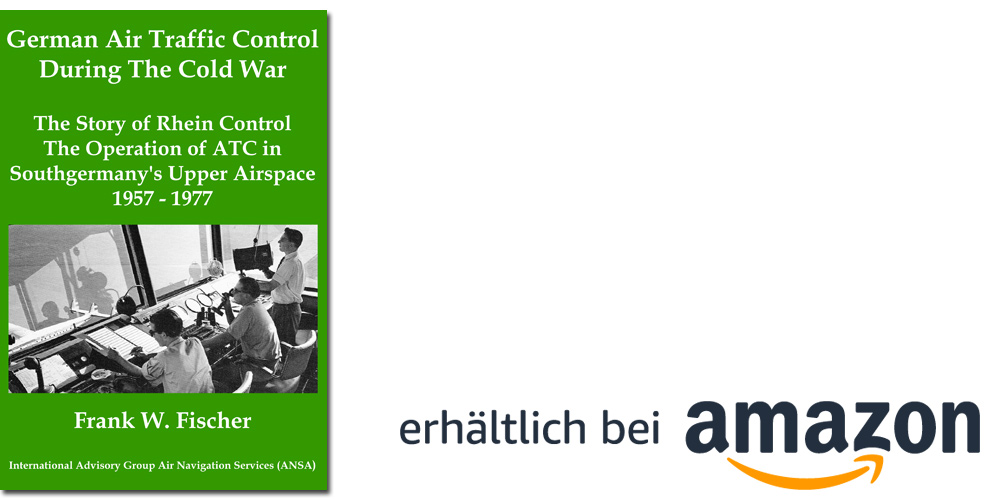
South Germany’s Upper Airspace Structure and Route Network
The new dividing line between lower and upper airspace was set at 20.000 feet MSL. Frankfurt flight information region (FIR) was divided between the FIR and the UIR. FL 195 or 19.500 feet of altitude was only used for VFR flight. It should be noted that during those times standard vertical separation for flight above FL 400 was 3000 feet, whereas 2000 feet had to be applied between FL 290 and 400. The reason was the given inaccuracy of aircraft altimeters.
In considering the development of the area of responsibility of Rhein UAC one must look back to the years of the US Occupation Zone before the three German flight information regions (FIR) were established. During the late 40’ies and until the establishment of BFS in 1953 most flight movements were conducted at altitudes up to 20.000 feet and controlled by the RAF in the North (British Zone), by the Soviets in the East (Russian Zone), by USAF and the US Army in the South and Southeast (US Zone) and by the FAF in the Southwest (French Zone).
Before 1960 and for all practical purposes this left all airspace above 20.000 feet for flight operations, such as air defence and other military training missions with jet-type aircraft, under air defence units. In the formerly still uncontrolled upper airspace USAFE and the FAF provided direction finder, flight information and radar direction services until 1957. As of June 1957 Rhein Control assumed the role of providing air traffic control (ATC) and flight information service (FIS).
Parts of the CTA still consisted of Advisory Routes (ADR) and the ADIZ covered only South Germany. As of January 1960 this whole area was designated as Frankfurt UIR with an embedded UTA between 20.000 and 25.000 feet and Rhein Control provided ATC and FIS to all civil and military flights in this airspace. With civil turbo-prop aircraft appearing on the sky a few years later ICAO concluded in 1958 on the establishment of FIRs and UIRs in differentiating between lower and upper airspace and corresponding route networks, formed by airways, advisory and predetermined routes (ICAO EUM Conference 1958).
Meanwhile BFS, three FIRs and two UIRs (Hannover and Frankfurt) existed and Germany had regained limited sovereignty (1955). By that time the lower airspace had been fairly well regulated in accordance with ICAO rules. The upper airspace, however, remained practically unregulated until NATO/CEAC and ICAO agreed on the official implementation of upper control areas (UTA) and the network of predetermined routes (PDR) in 1959. But the civil airspace users were not satisfied at all and so ICAO’s VI European & Mediterranean Regional Air Navigation Conference dealt with the matter again.
The meeting concluded that ATC should be provided in all those circumstances where this service is required. States having responsibility for ATS routes should provide controlled ATS routes and the relevant ground facilities (navaids) needed for navigation. The ATS system should be devised so as to provide for the least number of FIRs and related CTAs with realistic operating conditions, be procedurally “fail safe”, provide for the safe and expeditious handling of air traffic, assign responsibility to a single authority to provide ATS within any delineated area. Controlled airspace should be established to encompass the entire en-route portion of IFR flights. Air Traffic Advisory Service should only be considered as a temporary expedient.
Read More:
German Air Traffic Control During The Cold War
The Story of Rhein Control
Vol 3, The Operation of ATC in South Germany's Upper Airspace 1957-1977
https://www.amazon.de/dp/1536994391